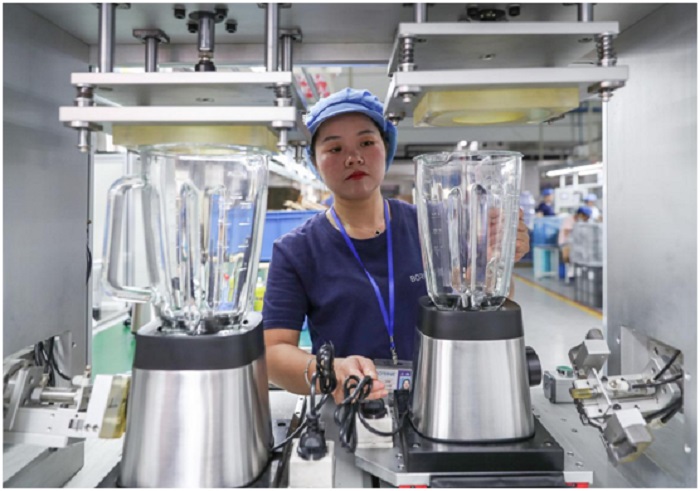



Small appliances, such as air fryers, electric mops and electric massagers, rose as a highlight of China’s electric appliance industry which registered a remarkable operating revenue of 1.48 trillion yuan ($230 billion) last year.
Given the continuously improving living standard of Chinese residents, as well as the saturate market of traditional home appliances, appliance makers nowadays are placing more emphasis on expanding their market shares. Under this background, the small appliance market is like a “new racing track” of the industry.
Personal beauty equipment, as well as fascia guns are popular among young consumers; electric ovens and breakfast makers make cooking possible for “rookie chefs”; vacuum cleaners and robots free people from daily chores.
These new products are rapidly occupying every scenario of modern living. With their advantages in price and convenience, they have gradually become what’s necessary for more and more people.
The sudden outbreak of COVID-19 brought huge impacts on the home appliance industry. The retail sales of the business dropped drastically by over 30 percent in the first quarter of 2020 from a year ago, due to impeded supply chain, offline sales, and logistics.
Compared with the sluggish performance of the traditional business, the small appliance market bucking the trend has injected a strong momentum for recovery into the industry.
The “stay-at-home economy” fueled the demand in the small appliance market, and influencer marketing also created favorable conditions for the market to grow.
Within an hour after last year’s “Double 11” online shopping festival kicked off, the transaction of hundreds of small appliance brands on an e-commerce platform surged over tenfold. As a major front of small appliance retailing, online marketplace embraced booming sales.
Many enterprises renewed their perception of the market, and are closely following the consumption trend that is turning more quality-oriented and intelligent, so as to deliver more innovative products and improve their competitiveness.
For instance, touch screen smart speakers not only conform to the trend of consumption upgrading, but also create benefit for enterprises. They are to some extent a winner in the price competition that alleviates market homogeneity.
Innovations made for small appliances stem from the demand of the market. Facing a consumption demand that is becoming personalized and differentiated, to dig into different market segments is a consensus of the industry.
On one hand, many enterprises have launched customized products for customers. For example, when sales of traditional TVs slipped, TV makers are producing new TV sets catered for education use, offering diversified choices for students and their parents.
On the other hand, driven by a national strategy to bring more appliances to the countryside, many enterprises are working to expand lower-tier markets. The hot sales of electric steamers, foot baths and heating tables in small- and middle-sized cities, as well as rural regions fully explained their huge consumption potential to be released.
The emerging small appliance sector mirrors the upgrading and transformation of China’s manufacturing. The country’s traditional manufacturing industry is going through a profound reform regarding development philosophy, production techniques and sales channels.
By combining the expansion of domestic demand with supply-side structural reform, creating new demand with high-quality supply, and constantly satisfying people’s growing need for a better life, China’s traditional industries have discovered new areas of growth and are revitalizing with new energy.


The Executive and members of the.


The Acting Director, FCT Directorate of.


President Bola Ahmed Tinubu has been.



Barely a month after resignation of.


An Abuja based Legal Practitioner, Osuagwu.



Convener of Equitable Remedy, Mrs. Magaret.


Contractors handling the contract for city.


Nigerian government may have concluded plans.


The Diplomatic Correspondents Association of Nigeria.


A rights group, “Follow Me Talk.
Leave a Comment